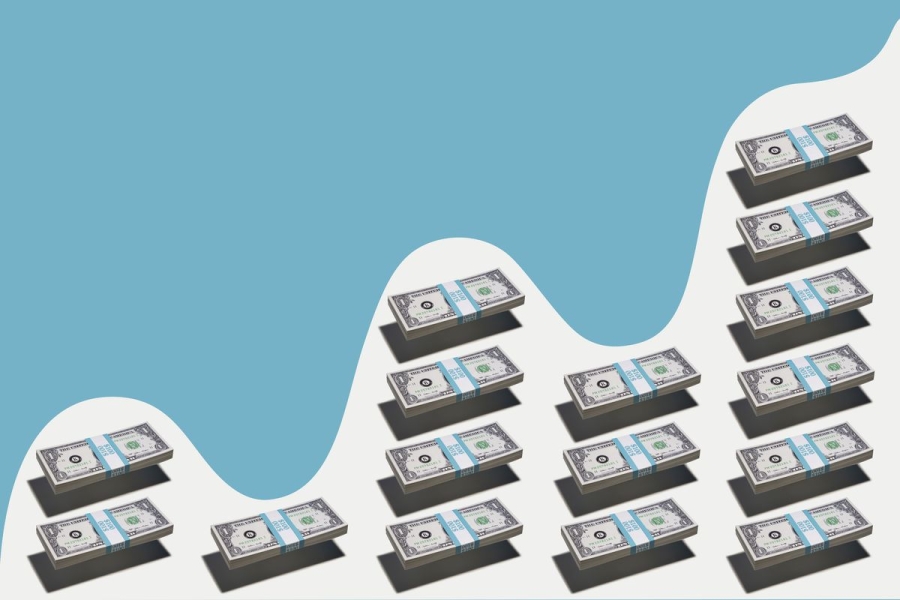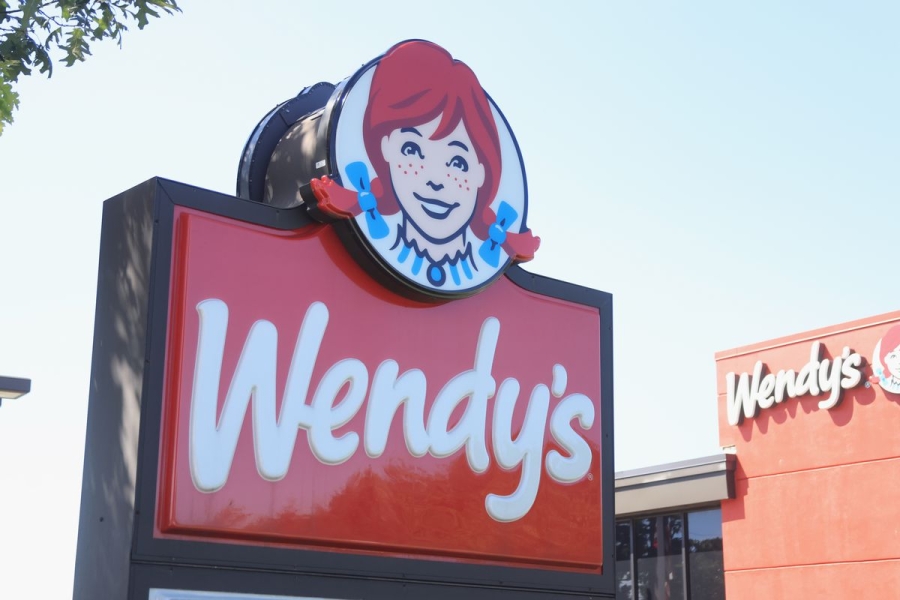More and more industries are adopting “dynamic pricing” — and consumers aren’t happy.

Whizy Kim is a reporter covering how the world’s wealthiest people wield influence, including the policies and cultural norms they help forge. Before joining Vox, she was a senior writer at Refinery29.
In the future, the ideal time to eat a burger won’t be when you’re hungry and really hankering for one. It’ll be the oddest, most awkward hours — late mornings or afternoons, the middle of the night on a Tuesday — the slices of time when prices will be lowest. Not unlike your Uber ride, fast food prices will go up or down depending on demand.
At least, this is the world people imagined when fast food chain Wendy’s revealed it would be tinkering with “dynamic pricing,” a broad term that describes any strategy where prices fluctuate based on supply and demand — like flights and Uber rides. The uproar was swift and sonorous; Wendy’s tried to clarify that it would use the strategy to offer lower prices, not to raise them when traffic is highest, but the reputational damage was done. In countless headlines, Wendy’s was accused of using surge pricing on food at a time when steep food prices at both restaurants and grocery stores have left many people drastically tightening their belts.
Above all, the Wendy’s fiasco also highlights an uncomfortable truth: It feels impossible to know what to expect to pay for anything. There are a lot of reasons for this — inflation, hidden fees, tipping creep — but one simple one is that we’ve been in the trenches of dynamic pricing for a long time. Between flights, hotels, concerts, car insurance, electricity, gas, Ubers, and online retailers like Amazon, many sellers adjust their prices using the trove of data at their fingertips to predict what people might pay at any given moment. Restaurants are just dipping their toes in an arena that Amazon and Uber seem to have perfected.
A history of how prices are decided
For most of human history, buying or selling anything involved the dance of haggling. Americans abandoned the practice in part thanks to the Quakers, who thought it was immoral that some people paid more for the same thing than others. Fixed prices were transparent and fair. Then, as an episode of NPR’s Planet Money explains, the boom of huge department stores in the late 1800s made it cumbersome to individually parley over thousands of items — so the price tag was born.
Of course, prices on these tags still changed from time to time. But it was a laborious process; employees would spend their shift placing new price stickers on every item, the paper price labels on shelves would have to be manually replaced, and in the case of restaurants, menus would have to be reprinted.
Still, there has long been experimentation in adjusting prices for supply and demand, to capture gaps in profit that merchants suspected they might be missing out on. In 1999, for example, Coca-Cola tested (but did not roll out) vending machines whose prices would rise as the temperature did.
“In my classes, we call it ‘perfection pricing,’” says Stephen Zagor, a Columbia University business professor with expertise in the restaurant and food sectors. “It’s a model that obviously has been around for a while in lots of different forms.”
The age of Big Data put dynamic pricing into hyperdrive, unlocking more granular, speedier price changes. “It can be done on a very, very microscopic basis,” says Zagor. Different stores in different parts of a single city can use two separate pricing strategies based on the demographic data the company has.
Amazon, for example, reportedly changes prices millions of times per day, with the average product’s price shifting every 10 minutes. The FTC, which sued the e-commerce giant last year accusing it of being an illegal monopoly power, alleges that Amazon used an algorithm to test whether competitors would match the company’s price increases on certain products and keep their own price high if they did match. The FTC estimates that Amazon made about an extra $1 billion in revenue through this automated pricing process. Amazon has said that it no longer uses the algorithm and that it was a brief experiment to see whether its price-matching system could lead to unsustainably low prices. (Over a decade ago, Amazon’s algorithm did go haywire and priced a book at almost $24 million.)
“I think that you see dynamic pricing in places where you also see a lot of market power,” says Ron Knox, a senior researcher and writer at the Institute for Local Self-Reliance. Amazon has so much pricing power in part because it’s “one of the world’s best collectors of consumer data.”
A glance at a product’s price history on Camelcamelcamel, a site that tracks price changes on Amazon’s marketplace, shows just how volatile the shifts can be. In extreme cases, it can rise to the level of price gouging; during the Covid-19 lockdowns, Amazon came under fire for price hikes upward of 400 percent on essential items. The price of a pack of 50 disposable face masks on the site went up a massive 1,000 percent, according to a report from Public Citizen. Price gouging isn’t unique to online marketplaces, but the ease and fine-grained detail with which online stores can adjust what they charge has turned the price tag into a more amorphous concept.
The wide-ranging spectrum of dynamic pricing we deal with today is only possible in an era when incredible amounts of data can be harvested and analyzed rapidly. Car insurance companies like Progressive or Root now offer a smartphone app to measure how well you drive, giving you a personalized rate based on that. We’ve known for a long time that consumers predicted to be higher spenders — derived from signs like whether they’re using an expensive iPhone or a cheaper Android, a spendy MacBook or a more affordable PC laptop — see different, pricier options at the top when searching for things like flights or hotel rooms. A study published in a Belgian newspaper last year claimed that the Uber app displayed higher prices if a customer’s phone’s battery was low, though Uber has denied the charges. A lawsuit filed against DoorDash last year argued that it charged higher fees to iPhone users, which, again, the company denies.
The issue is that in many cases, consumers have little clarity on what pricing algorithms involve. While consumers understand that businesses want and need to make money, “What people don’t like is opacity,” says Erin Witte, director of consumer protection at the Consumer Federation of America. The process of arriving at the price you see — which may be different than what a neighbor sees — is a confusing black box.
When dynamic pricing comes for your food
That price swings that are commonplace for flights are being applied to food is a hard pill to swallow for many reasons. While flights and concert tickets have a limited supply of seats, fast food doesn’t have such obvious supply constraints, so charging by demand feels even more alien.
Then there’s the fact that food is also a daily necessity, one that has already become magnitudes more expensive in the last few years. Overall, between January 2020 and January 2024, food away from home prices rose almost 28 percent. Fast food meals in that period rose almost 30 percent. In just 13 months between late 2021 and late 2022, Wendy’s raised prices by 35 percent, according to the restaurant price data platform Pricelisto. The average price of its menu right now is $6.03, more expensive than Taco Bell, McDonald’s, and Starbucks, though cheaper than Burger King’s average of $7.44. Last year, Wendy’s profits rose by 8 percent over the previous year.

It’s possible that the spread of dynamic fast food pricing is being hastened by the understandable grumbling over prices. “There are people who eat in fast food restaurants because it’s basically all they can afford,” says Zagor. It’s not just Wendy’s. The entire fast food industry is “struggling with managing value perception for the people who are going to spend the least,” says Zagor.
Charging different prices at different times of the day could drive more customers to their restaurants and drive-thrus without having to bring regular prices back down. After all, fast food prices already vary depending on menu item, as well as by region and city. (A Dave’s Single burger in a location in Dublin, Ohio — where the company is headquartered — is $5.49 before tax, compared to $6.99 at a New York City location.) Recently, several fast food chains, including Taco Bell and Pizza Hut, have reported stalling sales possibly due to price increases. Fast food revenue has gone up in the last few years as many chains have been charging more and more, but traffic still hasn’t quite recovered to pre-pandemic levels. Fast casual and fast food joints have been especially struggling to regain lunchtime visits in certain regions, such as in major cities whose downtown commercial centers are no longer buzzing with office workers. In New York, lunchtime restaurant transactions were down 23 percent in spring 2023 compared to early 2019, according to a report from the reservation platform Toast.
Variable pricing for food also isn’t new to the restaurant industry, particularly in fine dining where eating is more about the experience of high-quality food and ambiance than it is about filling caloric needs, as fast food is more likely to be. More so than fast food, dynamic pricing is “very likely to come around to table service restaurants,” says Zagor, not only for the food itself but even for the tables. Reservations for the best seat in the establishment at primetime on a Friday or Saturday, for example, could come at a higher cost than a midday reservation during the week. Dynamic pricing could even come to grocery stores as more US retailers install electronic shelf labels that allow merchants to effortlessly tweak prices for thousands of products.
The price of price volatility
The uproar over Wendy’s dynamic pricing plans underscores not just the public anger over higher food costs, but also that framing can make all the difference when it comes to consumer psychology. Call it a happy hour, a Tuesday-night special on chicken wings, there isn’t a controversy — but a “dynamic” price, or even worse, a “surge” price, is immediately inflammatory, even though the truth is that “the moment you bring a price down, it means there’s a price that is lower and one that’s higher,” says Marco Bertini, a marketing professor at ESADE Business School in Barcelona. “It’s a tricky way of saying exactly the same thing.” But psychologically, this semantic trick is pretty important. Otherwise, the imagination runs wild with scenarios of nervously sweating in a long line, glancing at the price of french fries on the digital menu ticking up.
Better yet, experts say, fast food companies will probably continue injecting heaps of data into algorithms that identify which menu items could use a bump at a particular time of day, but package them as serendipitous promos and discounts — not as a standing lower price offered at off-peak hours. After Wendy’s landed in hot water, competitors came out of the woodwork swearing they would never do such a thing. Burger King even offered a promo for a free burger that it called “No Urge to Surge.”
Dynamic pricing today may be unavoidable, but what consumers crave is a baseline of stability and clarity on how much we’re paying and why. There’s something unshakably disorienting about prices changing so quickly and finding our wallets beholden to a set of algorithms we’re not privy to. “It gives the feeling that we’re being manipulated a little bit more than we think we need to be,” says Zagor. Dynamic pricing, with the speed and detail with which it’s utilized today, allows businesses to optimize prices — for businesses, it can eliminate a lot of the uncertainty over whether they’re getting maximum profit. But that can come at the expense of more uncertainty for consumers. “We have this tension between ultimate efficiency for a business and consumer fairness,” says Witte.
People are more accepting of shifting prices if they feel they can game the algorithm a bit too, like knowing what driving behaviors can impact their car insurance rate. But if they have no control over the prices they’re offered, either because the rules of the algorithm are unclear or because they’re being charged more for an aspect of their life that they can’t change — like paying a higher price for an Uber due to a nasty storm — that’s a lot more frustrating.
The uncertainty consumers feel with dynamic pricing isn’t just about how much they’re paying; it’s “uncertainty about what others are paying,” says Bertini. What if others are getting a better deal than me? The beauty of the price tag was that it eliminated such anxieties. But it’s unlikely that dynamic pricing in the food industry will be shoved back into Pandora’s box. No matter what you call it, you should be sure to always double-check the price tag.
Source: vox.com






